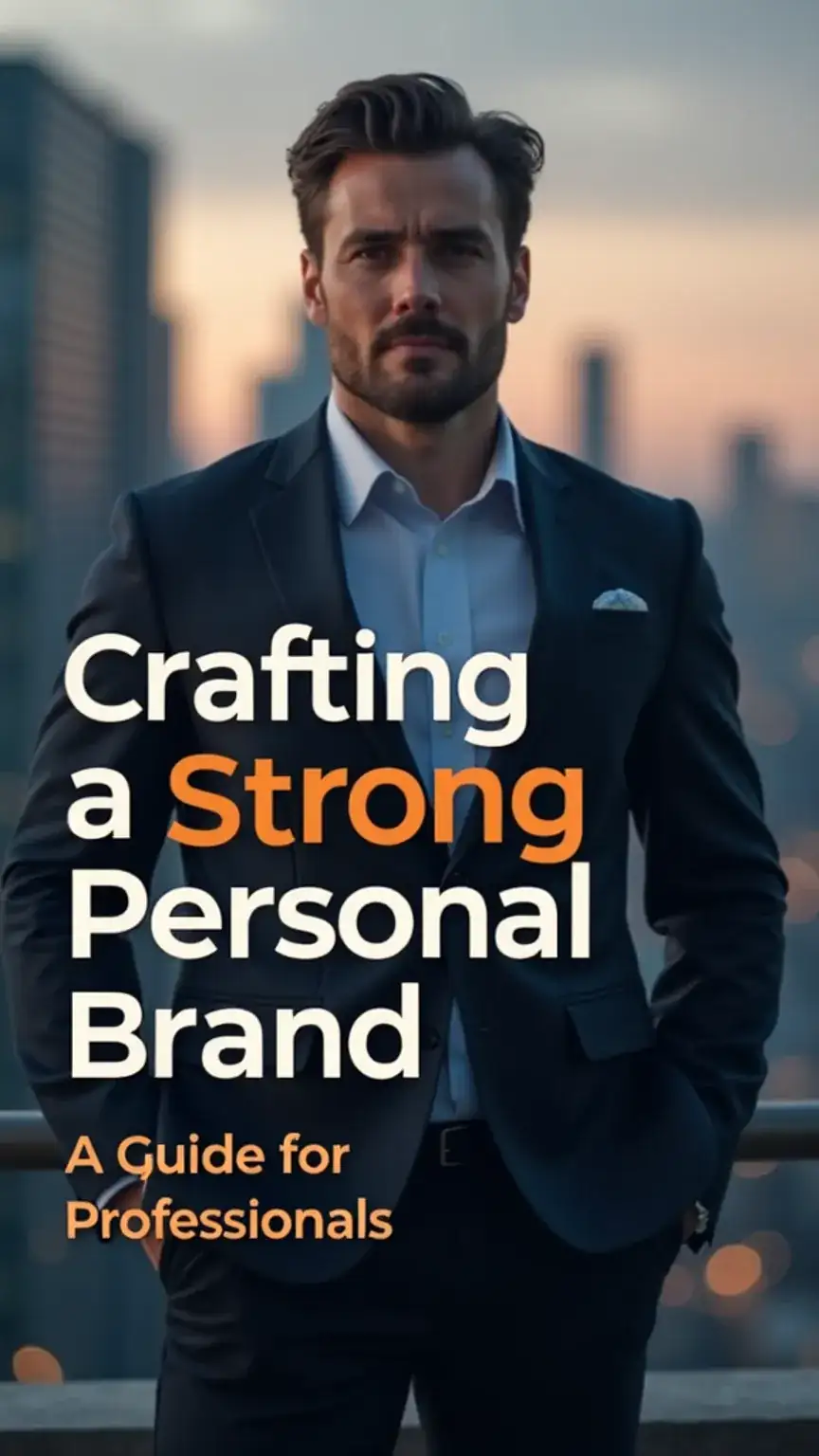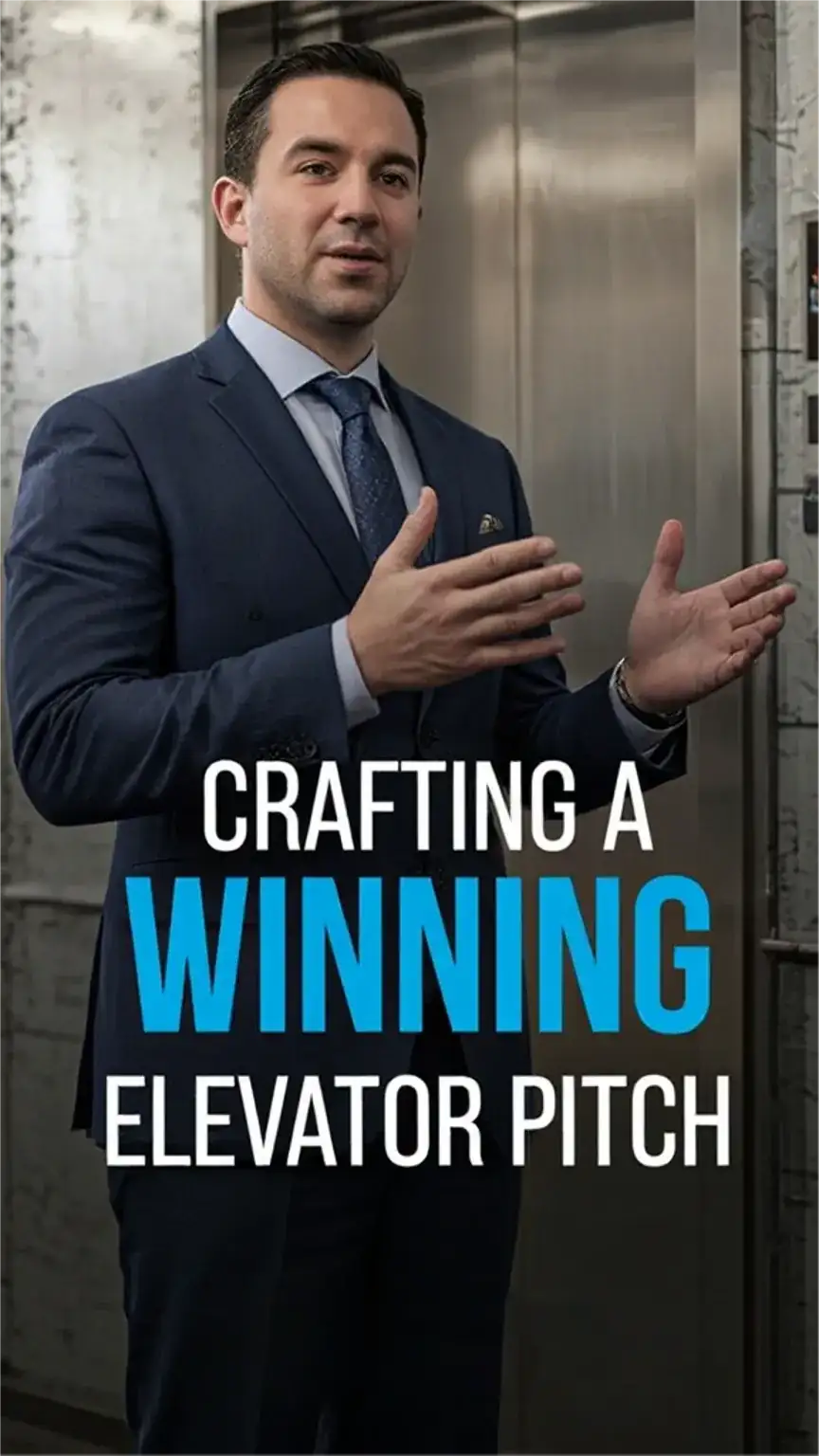Welcome to Your Personal Brand Revolution!
As a guy who’s been there, I know how tough it can be to stand out in a crowded industry. We’re talking about a world where first impressions are often formed before you even utter a word. But having a strong personal brand can be the game-changer you need to take your career to the next level. Imagine walking into a room where your confidence precedes you, where people instinctively know your value. That’s the power of a well-crafted personal brand. So, what’s the secret to building a personal brand that commands attention and respect? Let’s dive in!

The “Why” Behind Your Personal Brand
For too long, the idea of a “personal brand” felt like something reserved for celebrities or Silicon Valley disruptors. But in today’s hyper-connected world, it’s an essential tool for any professional. Think of it as your curated reputation, a deliberate articulation of who you are, what you stand for, and the unique value you bring. It’s about more than just a job; it’s about your career trajectory, your influence, and your legacy.
Furthermore, a strong personal brand isn’t just about self-promotion; it’s about clarity. It forces you to define your strengths, your passions, and your purpose. This clarity, in turn, attracts the right opportunities and the right people into your orbit. For example, take it from Dave, a 45-year-old accountant who landed his dream client after revamping his LinkedIn profile photo and bio. He realized his online presence wasn’t reflecting his expertise.
Step 1: Define Your Unique Value Proposition (UVP)
Your UVP is the unique combination of skills, experiences, and perspectives that set you apart from others. This is your personal brand’s North Star. It’s what makes you, you. Take some time to reflect deeply on what makes you special. What problems do you solve better than anyone else? What are you genuinely passionate about? Distill these insights into a concise, compelling statement. Think of it as your personal brand’s mission statement, something you can easily articulate at a networking event or in a brief introduction.

Consider your entire career journey. What are the recurring themes? What feedback have you consistently received from colleagues or mentors? For instance, are you the go-to guy for problem-solving, the creative spark that ignites new ideas, or the steady hand that brings projects to completion? Pinpointing these core strengths is crucial.
Step 2: Develop Your Professional Image
Your professional image is how others perceive you, both online and offline. It’s essential to project a consistent, authentic image across all platforms. This isn’t about being someone you’re not; it’s about presenting the best, most professional version of yourself. This starts with visual elements.
Invest in a good camera, or even a quality smartphone with a good lens. Learn some basic photography skills, or hire a professional for a session. You want to create high-quality visuals that showcase your personality and style. Your LinkedIn profile picture, for example, is often the very first impression you make. Are you using a cropped selfie from your vacation, or a polished headshot that conveys confidence and approachability?
Similarly, your attire speaks volumes. For gentlemen who want to elevate their professional game, understanding men’s professional style is paramount. It’s about more than just looking good; it’s about feeling good and projecting competence. Think sharp, well-fitting suits, crisp shirts, and polished accessories. Even in more casual environments, a smart-casual approach can make a significant difference.
Step 3: Build Your Online Presence
In today’s digital age, having a strong online presence is non-negotiable. This is where people will often find you first. Create a professional website or blog to showcase your work, skills, and expertise. This serves as your central hub, a place where you control the narrative. Make sure your social media profiles – especially LinkedIn, but also relevant industry platforms – are complete, consistent, and professional.
Your online content should reflect your UVP. Share articles, insights, and projects that align with your expertise. Engage in conversations relevant to your industry. For example, if you’re a marketing expert, share your thoughts on the latest social media hacks for men or offer Pinterest wardrobe tips for professionals looking to make a statement. Remember, consistency is key here.
Ladies, bookmark this for the man in your life who ‘has nothing to wear’ to your anniversary dinner. His online presence is just as important as his physical presence at that special event! A well-curated online profile can be just as impactful as a perfectly tailored suit.
Step 4: Curate Your Visual Identity
Your visual identity is more than just your profile picture. It encompasses the overall aesthetic you project. This includes the colors you tend to wear, the types of fonts you use on your website, and the general style of imagery you share. Think about the brands you admire. What makes their visual identity so strong and memorable?

Applying this to your personal brand means being intentional about your appearance in photos and videos. If your brand is about innovation and forward-thinking, perhaps your visuals should be clean, modern, and perhaps feature some dynamic shots. Conversely, if you’re in a more traditional industry, a classic and sophisticated aesthetic might be more appropriate.
For men, this often translates to understanding men’s professional style. It means investing in quality pieces that fit well and are appropriate for your industry. A navy blazer, for example, is incredibly versatile. Also, mastering etiquette in social and professional settings can enhance how your visual identity is perceived—check out Elevate Your Game: Mastering Etiquette in Social and Professional Settings to sharpen that crucial edge.
Step 5: Craft Your Narrative
Beyond your UVP, your personal brand needs a compelling narrative. This is the story of your journey, your challenges, and your triumphs. People connect with stories, and your narrative is what makes your brand relatable and memorable.
Think about the key moments in your career. What were the turning points? What lessons did you learn? Sharing these experiences authentically can build trust and rapport with your audience. Remember, your narrative should always tie back to your UVP. It’s not just about what you did, but why it matters and how it demonstrates your unique value.
For instance, instead of just saying “I have project management skills,” you could say, “I successfully navigated a complex project that was facing significant roadblocks, ultimately delivering it ahead of schedule by implementing a streamlined communication protocol – a skill I’ve honed over a decade of experience.” This paints a much richer picture.
Step 6: Network and Engage Strategically
Networking is key to building a strong personal brand. It’s about building genuine relationships, not just collecting business cards. Attend industry events, join relevant online communities, and engage with influencers and thought leaders in your niche. Be authentic, helpful, and generous in your interactions, and always keep your UVP top of mind.

When you engage, don’t just broadcast your own achievements. Ask thoughtful questions, offer support, and share valuable insights. When you contribute meaningfully to conversations, you build your reputation as an expert and a valuable member of the community. This consistent engagement amplifies your personal brand.
Furthermore, actively seek out mentors and people whose personal brands you admire. Learn from their strategies. How do they present themselves? What kind of content do they share? This can provide valuable insights for your own journey.
Step 7: Leverage Social Media for Impact
Social media is a powerful tool for personal branding, but it requires a strategic approach. It’s not just about posting randomly; it’s about creating a consistent stream of valuable content that reinforces your brand message. Platforms like LinkedIn are essential—use them to share industry news, your insights, and updates on your work. For a deep dive on mastering LinkedIn and standing out professionally, check out The Ultimate Guide to LinkedIn for Men: Tips for Success and Dominance.

Consider platforms like Pinterest for visual storytelling, especially if your profession has a visual component or if you’re offering advice related to style or lifestyle. Pinterest wardrobe tips, for instance, can be a great way to showcase your understanding of men’s professional style and attract an audience interested in image and presentation. Tag a friend who needs a style intervention!
Remember the surprise factor: 90% of recruiters judge your credibility by your profile pic—here’s how to ace it. Your social media presence is a direct reflection of your professionalism.
Step 8: Consistency is King (and Queen!)
Consistency is the bedrock of a strong personal brand. This means consistently showing up, consistently sharing valuable content, and consistently engaging with your audience. It’s about building trust and reliability over time. When people know what to expect from you, they are more likely to follow and engage with your content.
Authenticity is also essential. Be true to yourself. Don’t try to be someone you’re not, as it will eventually become apparent and damage your credibility. Your personal brand should be an honest reflection of who you are and what you stand for. This is where your future self will thank you for reading this.
For example, if your brand is about meticulous attention to detail, ensure your online profiles are error-free and your content is well-researched. If you advocate for work-life balance, your own online activity should reflect that.
Step 9: Seek Feedback and Adapt
Building a personal brand is an iterative process. It’s important to seek feedback from trusted colleagues, mentors, or even your audience. What resonates with them? What could you improve?
Pay attention to your analytics. Which of your posts get the most engagement? What topics generate the most interest? Use this data to refine your content strategy and ensure you’re providing value that your audience wants. Similarly, if you’re advising on men’s professional style, understanding what resonates with your audience is key.
Adapting to industry changes and evolving trends is also crucial. Your personal brand should grow and evolve with you.

Step 10: Invest in Your Growth
Investing in yourself is one of the best investments you can make. Take online courses, attend workshops, and read books that help you improve your skills and knowledge. A well-informed, well-rounded professional is always more attractive than someone who is stuck in a rut.
For example, if you want to improve your public speaking, invest in a course. If you want to enhance your digital marketing skills, take an online certification. These investments not only boost your capabilities but also provide talking points for your personal brand narrative.
Consider investing in professional services that can enhance your image. This could include a style consultant for men’s professional style guidance or a photographer for professional headshots. These are investments in your career capital.
Conclusion: Own Your Image, Own Your Future
Building a strong personal brand takes time, effort, and dedication, but the payoff is well worth it. By defining your unique value, developing a consistent professional image, and strategically building your online presence and narrative, you’ll be able to stand out in a crowded industry, attract new opportunities, and build a loyal community of fans and followers.
Remember, your personal brand is a journey, not a destination. It’s a continuous process of refinement and authentic expression. It’s about owning your image and, by extension, owning your future.
Ready to own your image? Start with defining your UVP and updating your LinkedIn profile picture. Share your #StyleUpgrade and your personal branding journey on Pinterest or your favorite socials!
For more tips on establishing a strong professional presence both online and off, check out our related posts: Elevate Your Professional Image with These Social Media Hacks and Building Executive Presence: A Guide for Men.




